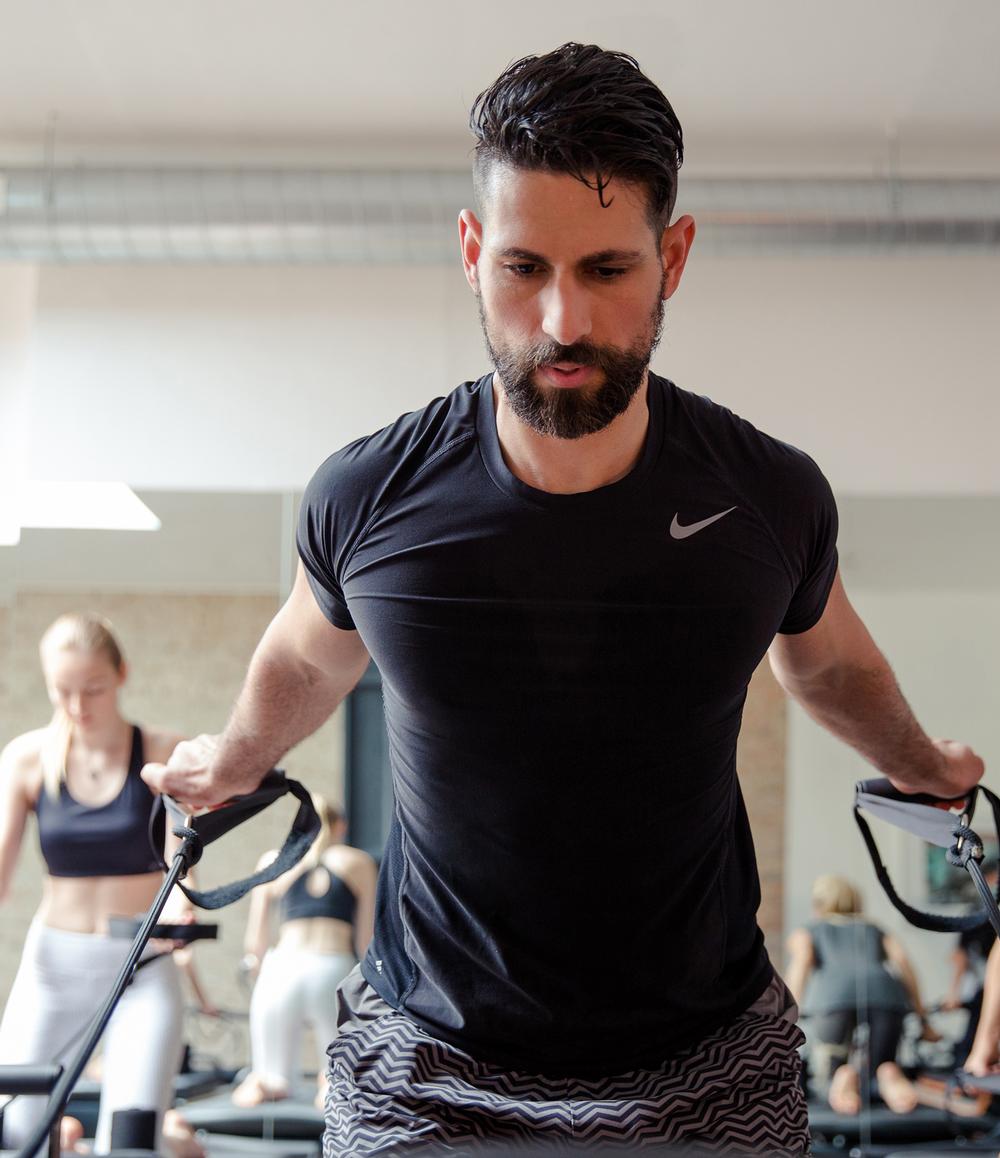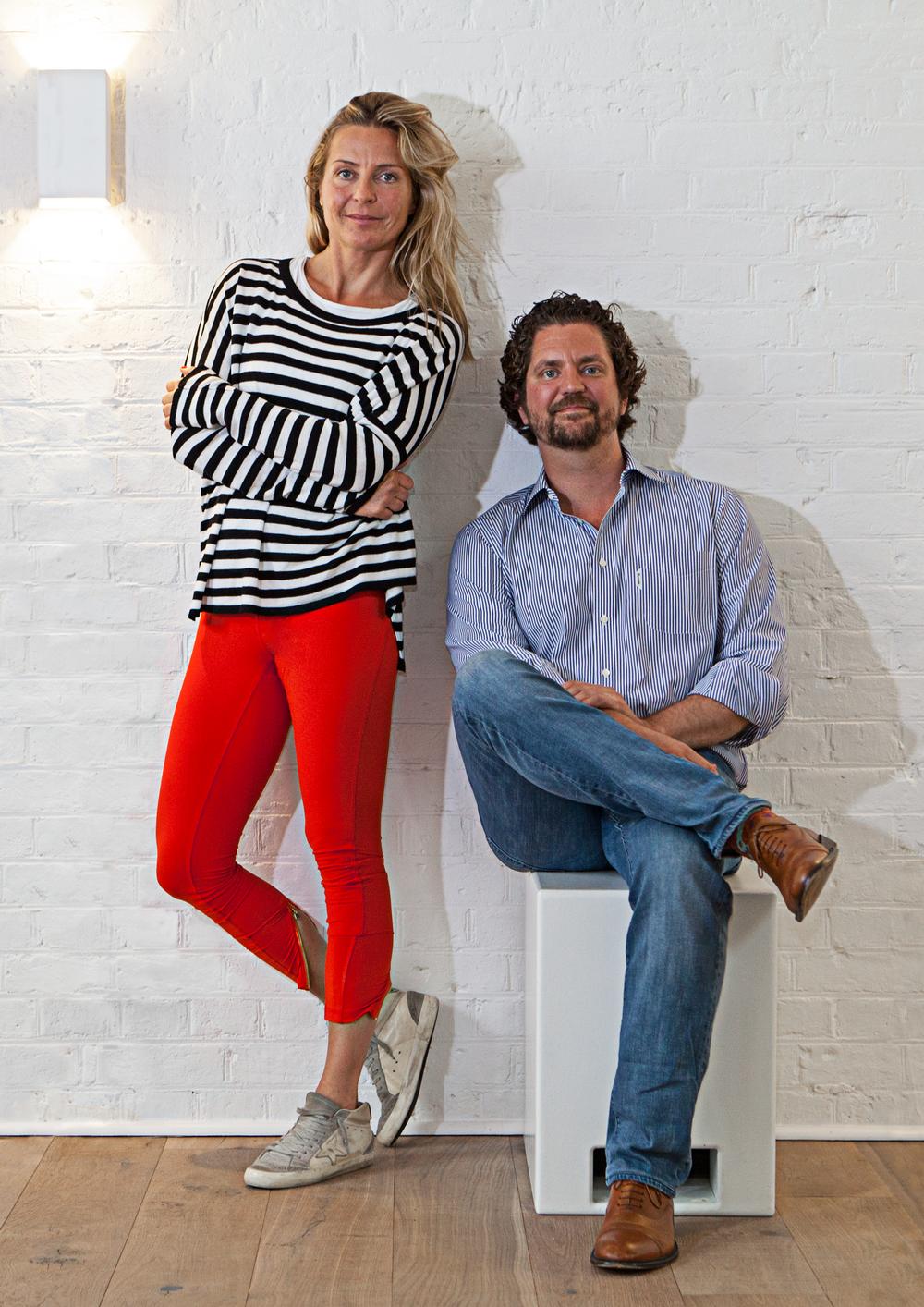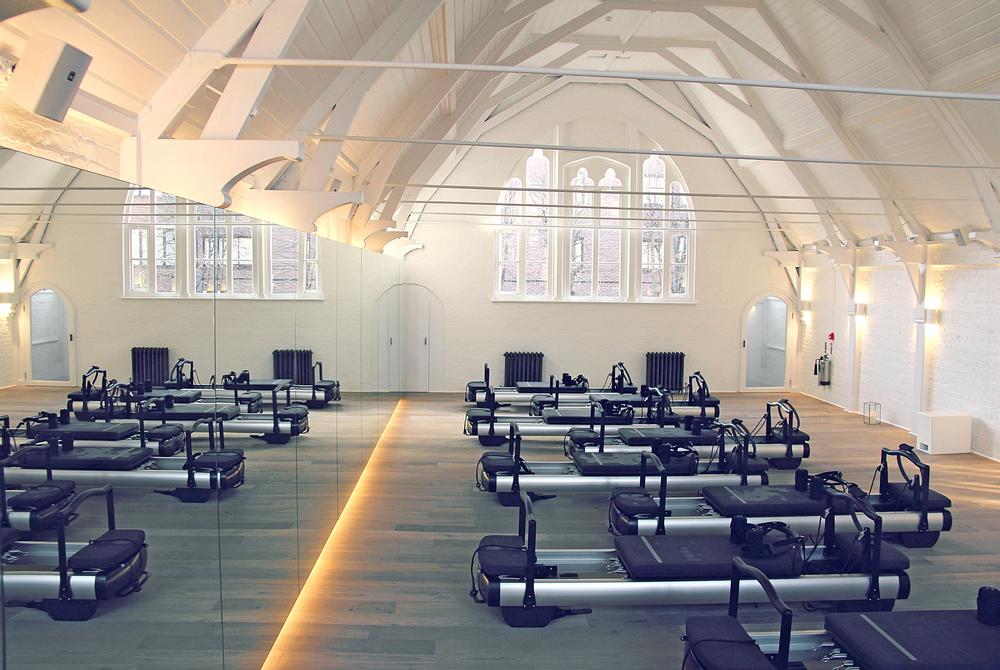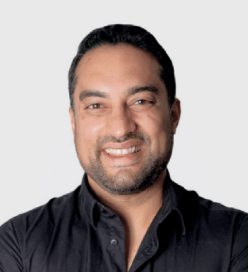I meet Brian Schuring, the co-founder of boutique fitness studio brand Heartcore, in Kensington on a sunny morning in May. “I love it round here,” he enthuses, a huge smile on his face. “It’s right in the centre of London but it has a village feel to it – you get to know everyone. When we [Schuring and his then wife, and still business partner, Jess] came over from the States a few years ago to check it out, it just felt right.”
That visit, back in 2006, was to decide whether they wanted to move to London to set up an office for Ares, the private equity and investment firm he was working for at the time. The answer: a resounding yes – and Jess was immediately eyeing up a new opportunity.
“Jess is a graphic and interior designer by training, but she had a passion for fitness and qualified as a personal trainer when we were living in Los Angeles. She worked at the studio of a guy called Brad Bose in Beverley Hills, and ended up training an impressive list of celebrities including Robert Downey Jr.
“Brad had a style of training that was ahead of its time: high intensity and weights-based. So Jess was immersed in that, and she also caught on to a new dynamic pilates trend that was emerging in LA at the time. I remember her coming back from her first class saying it was one of the best workouts she’d ever done. And this was the girl who ran marathons and who’d tried every workout under the sun.
“It was almost exactly at that time that Ares asked if I’d go to London. Even that first weekend we came to have a look around we knew, if we were able to create the sort of fitness offering we were used to in Los Angeles – homely, cosy, personal but effective – it would work just as well in London.
“From that point on it was just a question of where we opened the first one, what exactly our offering would be, and how we’d bring the whole thing together.”
Heartcore is born
In the end, the first Heartcore studio opened in their adopted home of Kensington. So how would Schuring describe the concept?
“When we opened that first studio back in 2007, we were offering small group training in a boutique environment – essentially an alternative to personal training. It was a 55-minute, highly focused session that didn’t cost £80 or £100 – it cost £20.
“We’re now up to nine studios and the essence of what we offer is the same as it always was. It’s still about how we can take 55 minutes of your time and give you the most effective workout possible, delivering results you wouldn’t achieve on your own.
“Creating a homely, personal space – somewhere people are happy to go, where they tell us they’d actually be happy to live – is also still at the heart of our model. That’s really important, because however motivated our customers are, over a 12-month period there will be at least 10 times when they absolutely don’t want to get out of bed to train, or make time after work. And for every one of those 10 they miss, it multiplies exponentially the chance they’ll miss the next one. Those are the points at which they’re most likely to stop their routine.
“We can’t get everyone to come all 10 times, but we might get them to come five or six. And to do that, we have to understand and address all the friction points. Is the floor too cold? Are the flowers still fresh? Is the lighting just right? Any niggles make a big difference. We’re obsessed with the customer experience at all times.
“We also create an environment where people genuinely like to be and where their friends are – people they’ve trained with in the same time slot so many times that they’ll be missed if they’re not there, and the instructor will miss them too because they know them by name.”
Embracing group exercise
He continues: “So the essence of Heartcore has stayed the same. However, people probably don’t think of us as an alternative to personal training any more. We embrace the group aspect of our training a bit more than we used to, by offering classes with enough spaces that it helps generate an energy.
“It’s been a marginal change – classes are still small enough that the instructor can correct everyone’s form – but it does now feel like group training rather than the quiet, five-person sessions it used to be.
“To put that into numbers, our largest pilates studio holds around 10 people; barre classes cater for between 10 and 20; TRX is 10 to 12; and yoga is 20 to 30.
“We bought the yoga business – Blue Cow Yoga, located in Moorgate in the City – a couple of years ago to see what we could do with it, and relaunched it in January last year.
“It’s working really well. Obviously it’s a different kind of experience, but the same principles are true for Blue Cow as they as for Heartcore: if you create a community, an energy, a personality behind your brand and you focus on what genuinely matters – which isn’t delivering 10 things, but delivering three really well – it will move the business forward.
“It’s a 5,000sq ft location, so we’ve had space to add more studios on-site. Alongside the Blue Cow yoga studio we now have Heartcore-branded pilates and barre studios.
“We’ve kept Blue Cow and Heartcore as separate brands for now. In the long run we may merge the two – I really don’t know – but for now we’ve brought Blue Cow yoga classes to our brand new Notting Hill studio, which soft launched last month.”
Delivering results
Schuring continues: “One thing that hasn’t changed much at Heartcore over the years is the price. In fact, we’ve only raised prices once, so a class today will cost on average £21, and on a package no more than £27 even at our most expensive locations.
“And our list price is what you pay. For many operators, the list price serves primarily to set their ClassPass price, which is where a large proportion of their classes clear. We don’t use ClassPass because we’re running at capacity based on word of mouth.
“From a marketing perspective, ours is what I call a dinner party business. In our first three years of operation, so many people who knew me in the City would say: ‘I just heard about you the other night at a dinner party.’ Our customers meet up with friends, are told how great they look, and they credit Heartcore. That goes for men too – around 20 per cent of our customers are men, including some of our most passionate clients. If that’s your entry point to a brand, it’s very powerful.
“That’s one of the reasons we haven’t had a marketing person in the business so far. We put all our time, effort, energy and investment into the product and the experience, continually reviewing to make sure we’re delivering the best, most effective class every time.
“We firmly believe all businesses win on quality, not price or a sexy brand – and in fitness, it’s about quality of results.
“That’s something the big box gyms struggle to deliver in their unsupervised environments. People aren’t being pushed that extra 10 per cent beyond what they’d do on their own, which is where all the results happen, so sooner or later they leave.”
The customer experience
He continues: “Another reason I believe we’re as popular as we are is our focus on the customer experience. You have to have a relationship with every person who walks through the door. Our first four studios didn’t even have receptions, so it was down to the instructor not only to teach the class but also to make sure everyone felt valued and special. That was in our DNA from the beginning, because it’s come from us – from Jess and from me. That’s how we are. It’s how we treat people.
“And the third reason is hard work, pure and simple. We have an ethos that we commit to getting better at one thing every week, and we’ve made a lot of small improvements to the business over the years because we’re willing to try things.
“Much of that is facilitated by the data we hold – boutique fitness has better data than almost any business model I’ve seen in over 15 years as an investor. That’s because it’s all booked online, which naturally creates a lot of useful data points. So while Jess is in the studios reporting back on how things feel, how the energy is, I’m able to look at the underlying data: what classes are filling, what classes aren’t, how new instructors are performing. We get both sides of the picture.”
Expansion plans
So what does the future hold for Heartcore?
“Looking purely at London, at the moment I’d probably say we could get to a total of 15 studios, and there may even be scope beyond that – the upper limit moves as the market matures.
“However, you have to ask what your ultimate long-term goal is. Do we want to be a 15-studio London fitness business or do we want to be something different? Do we want to be, for lack of a better term, a financial and cultural centre business, with a few studios in major markets around the world? Or do we want to go outside of London?
“Because I believe we’re getting to a point where, beyond London, the UK is probably ready for something like this. Disposable income is the big driver, but there are ways you can do it – you change your floor plan a bit and it becomes more accessible to the people who live in that area.
“It would make a lot of sense for us to explore this avenue, because there seems to be this mad rush in London right now. Everyone wants to be involved and that puts pressure on a few key drivers, from rents to pricing to wages. That’s not a bad thing per se, but it’s something you have to recognise as an investor.
“What I’d rather do with Heartcore is read the market and find places where we’re doing the interesting thing, rather than the thing we feel we have to do because we’re Heartcore. From that perspective, we have some important decisions to make with the next studio.”
He continues: “It’s always been our own capital in the business and we wanted to get to a point where, as fast as we can build new studios, the business can fund them. I think we’re there – it’s just a case of finding the right places at the right time.
“And the right time for the next studio isn’t quite yet. We’ve opened five locations in 24 months and that puts a lot of strain on a small team like ours – I feel we’ve earned a little time to refresh, refocus and refine the business.
“If you were to show me the perfect property tomorrow, I’d take it – because I always take it – but I wouldn’t do anything with it until late this year. From an expansion standpoint, we’re going to go really quiet for a couple of months. Money doesn’t get tired, but people do.”


























































